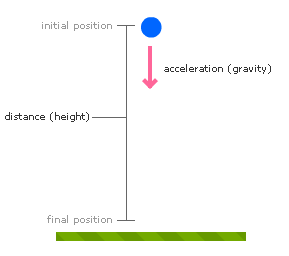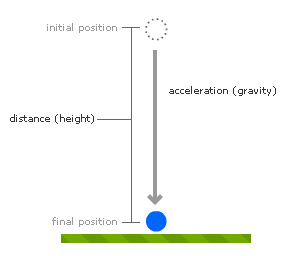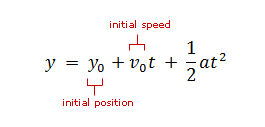|
by
kirupa | 10 February 2009
So many of the animations you create directly or
indirectly are inspired by motion in the physical world.
Yet, the language of motion you use in Flash is completely
different from that of the mathematical equations that
describe physics. In this tutorial, let's look at how to
reconcile those two worlds.
The last sentence probably sounds scary. This sounds like
a flashback to physics classes which often involved
contrived examples of blocks on inclines, cars sliding down
the road, and things dropping from tall places. This
tutorial will describe things dropping from tall places! (hey, I
never said that I was original
 )
)
The following is an example of the effect I will be
describing. Click on the ball to see it fall again.
[ click on the ball once it hits the
ground to cause it to fall again ]
The effect you see can be created easily using a few
simple eases, but instead, I am defining the motion manually
using good old fashioned physics equations. As you will see,
the concepts behind it may be a bit complicated. The actual
code is pretty straightforward.
In order to understand the code that powers the above
animation, it will be helpful to learn the physics behind
falling objects. Let's take a look at the following diagram:

The diagram is pretty representative of the the ball
falling in the animation. The key things to note about this diagram are
the various labels I've given to the points of interest. The
distance your ball falls is the difference between the
initial position and the final position. The force that
causes your ball to fall is gravity, and it is always
downward. Seems simple enough.
At the end of the fall, you know where the ball is going
to be. It is going to be at the bottom where the final
position mark is:

The tricky part is knowing exactly where the ball is between the initial position and the final position.
It's not a linear fall, so you can't evenly divide the
position your ball is based on the total height. There is
acceleration, so the ball moves faster through certain
regions and slower through others.
Figuring this all out from scratch would be tough, but thankfully, this is something that has been well defined for
a few hundred years. The following equation describes the
position of your ball as it gets dropped:

The a stands for
acceleration, the t stands
for time, and v represents
velocity or speed. The position of my ball is determined by
three things:
- My initial position (y)
- My
initial velocity (v * t)
- Distance from the accelerated movement (.5
* a * t2)
Our initial position is the starting point of the ball
drop. What about initial velocity? Well, we actually don't
have an initial velocity. The value of v is 0. The reason
is, at the beginning of the drop, the ball is
motionless. It isn't being thrown down, so the equation can
be simplified a bit as follows:

This equation looks a bit nicer! Anyway, keep the last equation in mind, for that defines
the structure of the code that is used to make our object
fall. In the
next page, we will look at the
second half of the animation that concerns the physics behind
objects that bounce after hitting the ground.
Onwards to the
next page!
|